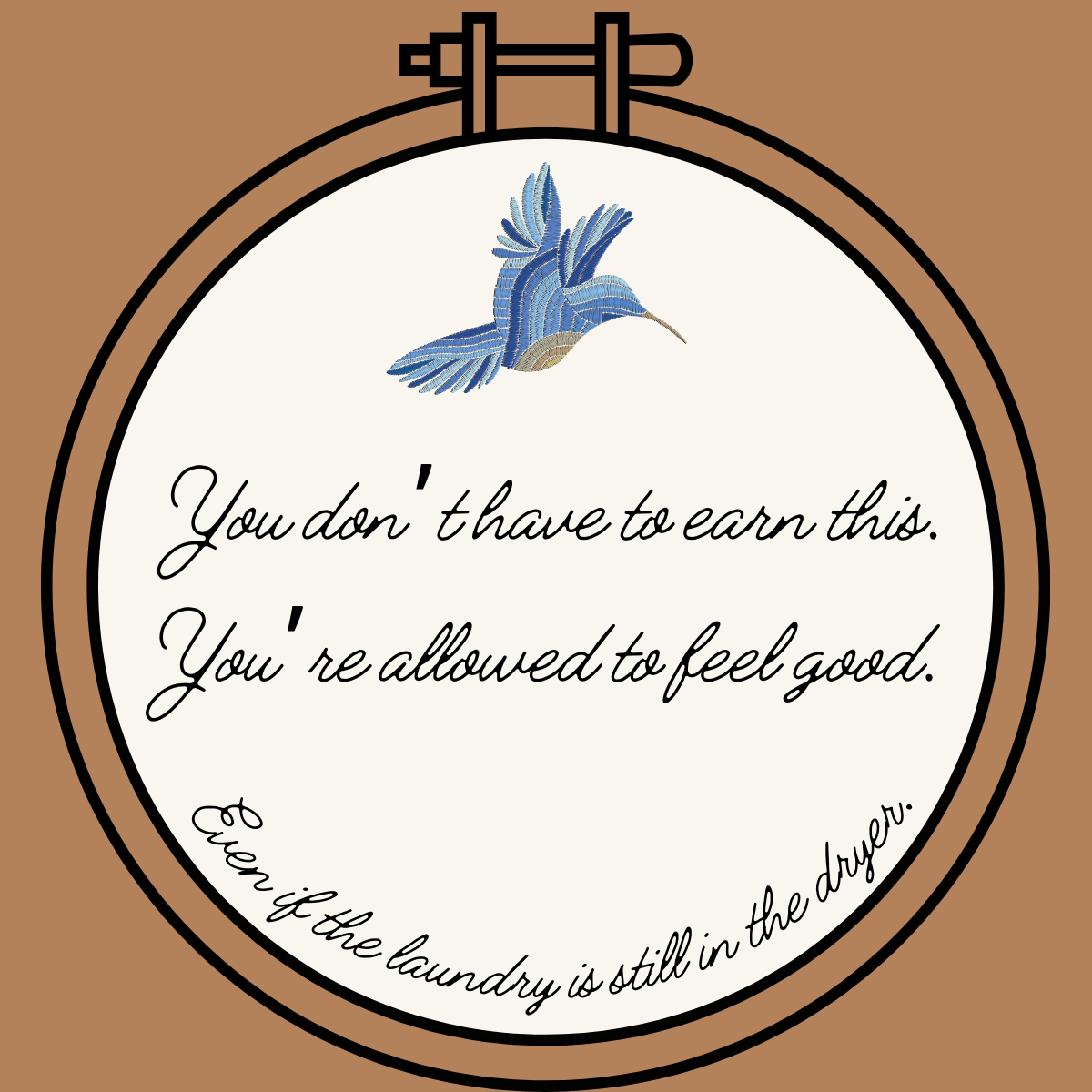5 Reasons You Need a Soft Structure for Your Nervous System
(...especially if you’re a recovering perfectionist who’s tired of earning rest)
If you’re a high-achieving, emotionally exhausted human who wants to feel safe being soft—but still needs some kind of structure to not unravel completely—you, my friend, are in the right place.
Before I discovered soft structure, I struggled with what I now call “healing whiplash.”
One week I was micromanaging my morning routine with a checklist color-coded by mood. The next, I was abandoning structure completely in the name of rest, only to spiral into guilt and chaos.
Neither extreme worked.
When I realized how many of my therapy clients were also struggling with structure—trying to find the balance between control and collapse—I knew I had to find a better way.
Something that held them gently without holding them hostage.
Now, instead of getting stuck in shame spirals about not doing “rest” or “routines” the “right” way, we practice soft structure: the warm, flexible rhythms that help your nervous system feel safe without performing wellness for gold stars.
If you want to calm your nervous system, build emotional safety, and create routines that actually feel like you, this approach can help.
Here are 5 reasons your nervous system craves a soft structure—and why it just might be the missing link in your healing.
✨ Reason #1: You’ll Calm Your Nervous System (Without Burning Out Trying)
Life throws a lot at us. And for high-functioning anxious folks, even relaxing can feel like a performance. But here’s the good news: you don’t need a strict schedule to regulate—you need rhythm.
When you create predictable, low-pressure rituals, your nervous system gets the memo: I’m safe. I know what’s coming. I don’t have to brace myself.
For example:
→ Having “yarn time” at the same point in your day (instead of “morning routine perfection”)
→ Touch laundry every day (instead of ‘I do an entire load of laundry start to finish daily’)
→ Doing the same imperfect stretch before bed, every night
These micro-rhythms build the foundation of internal safety—without demanding perfection.
💡 Reason #2: You’ll Gain Clarity Without a Crisis
If you’re trying to slow down, soft structure gives you just enough shape to know what’s next… without overloading your nervous system.
Before I started using this approach, I would either:
Go full-panic and overplan my day in 15 minute increments, OR
Avoid all structure because “rest should be intuitive” and then end up dissociating into a shame hole
Soft structure gave me something in between.
Now I use cozy rituals as intuitive signposts—not rules, not restrictions.
And the clarity I used to chase in planners? It finds me in the rhythm.
🧶 Reason #3: You’ll Feel Emotionally Safe While You Rest
Structure doesn’t have to be a control mechanism—it can be a safety signal.
The more you pair rest with a gentle pattern or environment, the more your nervous system starts to associate stillness with safety, not danger.
It’s not about what you do—it’s about how your body feels while you do it.
My favorite example of this is imperfect knitting. No pattern, no goal. Just yarn, repetition, and presence. My body remembers: this is safe.
Want to try this? My free guide Stitch by Stitch walks you through 5 reasons knitting helps regulate the nervous system, plus 3 cozy patterns for building rest into your routine—without the guilt.
🧶 Click here to download Stitch by Stitch
💭 Reason #4: You’ll Let Go of Shame-Based Routines
You’ve probably tried some version of:
→ “If I can just stick to my morning routine…”
→ “If I miss one day, I have to start over…”
→ “Rest is only allowed after I finish everything else…”
These aren’t routines. They’re rituals of self-punishment disguised as self-improvement.
Soft structure unhooks your healing from the shame spiral. It says:
And when your nervous system no longer associates structure with failure, you actually stick to the things that make you feel good—because they’re built from permission, not punishment.
🧠 Reason #5: You’ll Regulate More Easily—and More Sustainably
Soft structure works with your nervous system, not against it.
Once I let go of rigid plans and started weaving structure into cozy rhythms, I stopped:
Starting routines I couldn’t maintain
Shaming myself for breaking them
Feeling like healing was another job I was bad at
Now? I:
Make small progress that matches my energy that day
Set aside knitting time for joy & regulation
Let rituals be imperfect, messy, enough
I’m still healing—but I’m no longer performing it. And that shift? It changed everything.
🧵 Wrapping it Up
Soft structure is like scaffolding for your nervous system.
Not too rigid. Not too loose. Just enough shape to hold you while you remember how to feel safe again.
Want to try it for yourself?
✨ Download Stitch by Stitch – your free guide to nervous system rituals using fiber arts, designed for recovering perfectionists who want to rest without guilt.
You’ll get:
5 reasons why knitting supports nervous system healing
3 imperfection-friendly patterns
A manifesto on imperfect making
A printable affirmation to keep beside your projects
And remember: you’re not bad at routines. You’re just ready for something softer. 🧶

